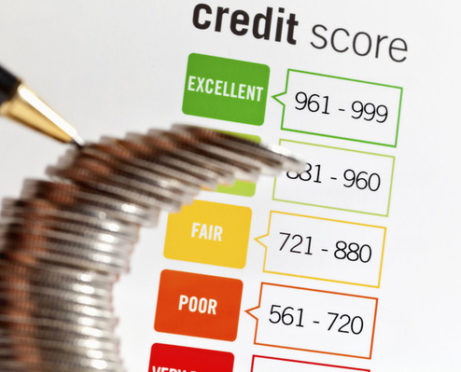
Jeni Houser
When you come to my gym, don’t let the word chipper mislead you. It doesn’t refer to someone’s mood. The chipper is a workout that includes movements done at a level that will push your metabolic endurance. More important, the chipper workout is known for testing and building mental toughness, as well as the ability to remain consistent and goal-focused even when your brain is telling you to stop.
- 50 burpees
- 40 kettlebell swings
- 30 dead lifts
- 20 pull-ups or rows
- 10 tree walks
Chipper workouts remind me a lot of the challenges you face when saving, paying off debt, or pursuing financial freedom. I use this method in my personal finance life.
Completing chippers — or any fitness plan — can be tough. Achieving financial freedom requires the same discipline and determination. And building mental toughness to get the job done isn’t always easy.
Save Simply and With Ease Toward Your Financial Goals >>
Applying the Chipper Workout Method to Finance
After surviving a divorce and not knowing what my financial future would look like, I decided to apply the same methods I offer my clients (and myself) to my personal finance life.
Three years ago, I started chipping away at credit card debt and adding incremental amounts to my savings account. My goal is to get one month’s living expenses into my savings account. With these small, consistent steps, I’ll be on my way to financial freedom.
When you first encounter a chipper workout, the large number of repetitions seems defeating. How will you get through this workout in time without dying? If you’ve dealt with a large amount of debt or are saving for a big purchase, you probably thought the same thing. It seemed impossible.
However, with the right mindset, you can successfully tackle both a chipper workout and your finances. The methodology is the same for chipping reps at the gym and for chipping away debt: Push yourself and stay consistent.
Once you’ve made it through a chipper workout, be proud. You’ll definitely feel accomplished. Here’s a strategy that can help you build mental toughness and set you up for success in the gym and in your finances:
1. Chip Away
Make a plan and stick with it. The best way is to adjust your mindset to focus on the chipping process. Concentrate on recognizing your accomplishments, one rep at a time.
Struggling to Pay Off Your Debt? Talk to a Professional Today for a Free Consultation >>
If you’re paying off debt, don’t get overwhelmed by the enormity of the amount that you owe. Remind yourself how much you’ve already chipped away. The same is true of chipping away at your weight — one to two pounds of weight loss per week is ideal for a sustainable program.
2. Define Your “Why”
To get into the right frame of mind for a chipper workout (whether financial or physical), focus on what your overall goal is. This will help in building mental toughness.
As you begin to feel fatigue, remind yourself why you’re putting yourself through this “pain.”
This will help you see the light at the end of the tunnel.
3. Discover What Works for You
In both the world of fitness and the world of personal finance, it’s easy to compare yourself with others. Find your own pace, whether it’s in the gym or with your bank account. Figure out what works for you financially. For instance, do you need to hide your credit cards or reformulate your budget?
4. Find a Coach
Don’t underestimate the importance of coaching. It's great to have someone in your corner who helps you remember what you’re capable of and what your goals are. Somebody who can advise you on a strategy to keep you on track and help you stay motivated.
Ask a Human Financial Coach — Text Your Question Anytime >>
 The Chipper Workout and Building Mental Toughness
The Chipper Workout and Building Mental Toughness
While it’s great to know the big picture, it’s also important to recognize the small steps needed to reach your goal and to applaud yourself for putting in the effort. Whether you’re maintaining fitness or financial goals, the concepts are similar.
Most of us want to be physically fit and financially secure, but few of us are.
Often, we don’t want to make the necessary sacrifices, or we lack access to the right strategies to do so. One strategy is to apply the same focus you have for one to the other. Self-care includes financial wellness as well as physical wellness. You can start small. You don’t jump right into a new fitness routine, so why do that with finances?
Get ahead by taking the challenge one month at a time and setting targets in weight loss and debt reduction or saving. Both will take time, energy, and commitment to building mental toughness and getting on track.
Remember, this is a holistic approach. Being physically fit makes you feel better and live better. When you become more financially fit, you’ll feel the same rewards. My mind and body felt a reduction of stress and insecurity. In fact, I gained more confidence.
Stay the course. Markets are often volatile, which can be scary. But focus on the long run and keep on working.
So Where Do You Start? Taking Baby Steps
- Find a professional, coach, or financial adviser, and start small.
- Chip away or save away: Can you put $10 aside each week or 10 minutes of activity each day?
- Use SMART goals with a friend or accountability partner.
- Use a tracking device to keep an eye on reps or on your saving and spending habits.
- Start thinking of a strategy to tackle the problem or the reps. Think discipline and consistency (a good steady pace) and hard work (persistence).
Accelerate Your Savings With an Online CD Account — Apply Here >>







